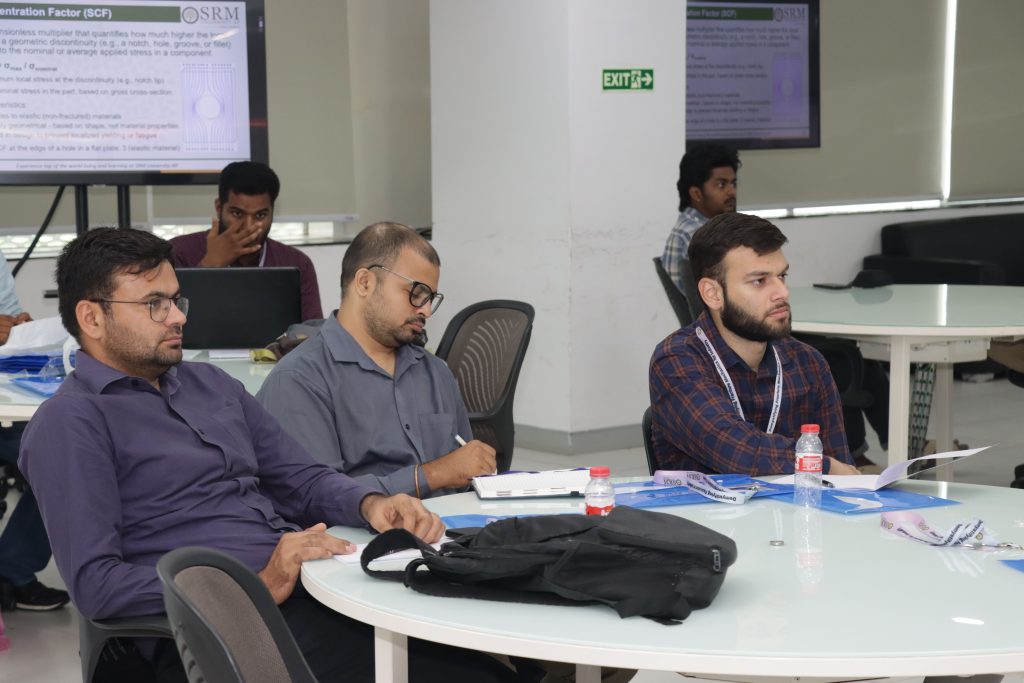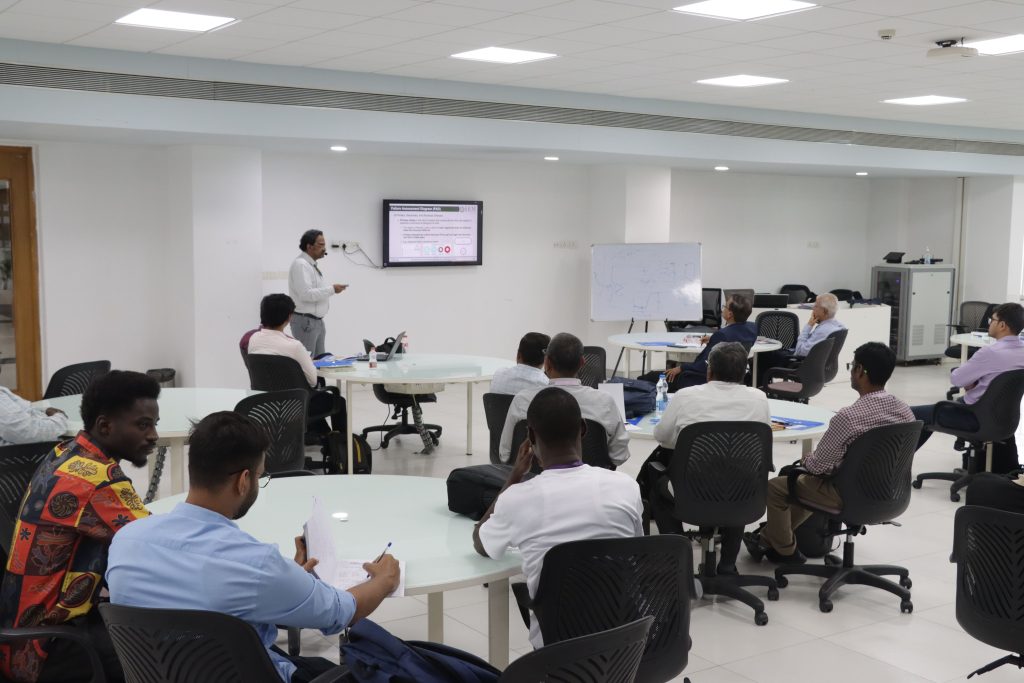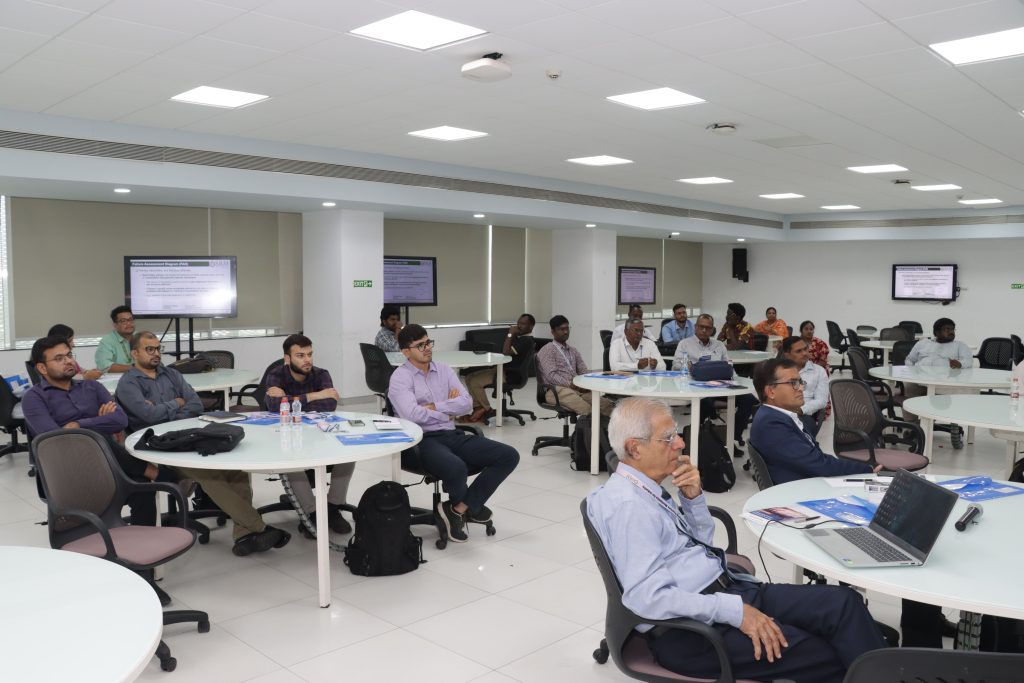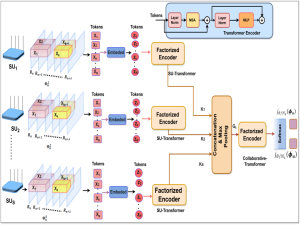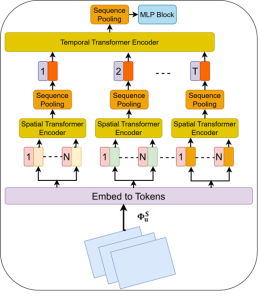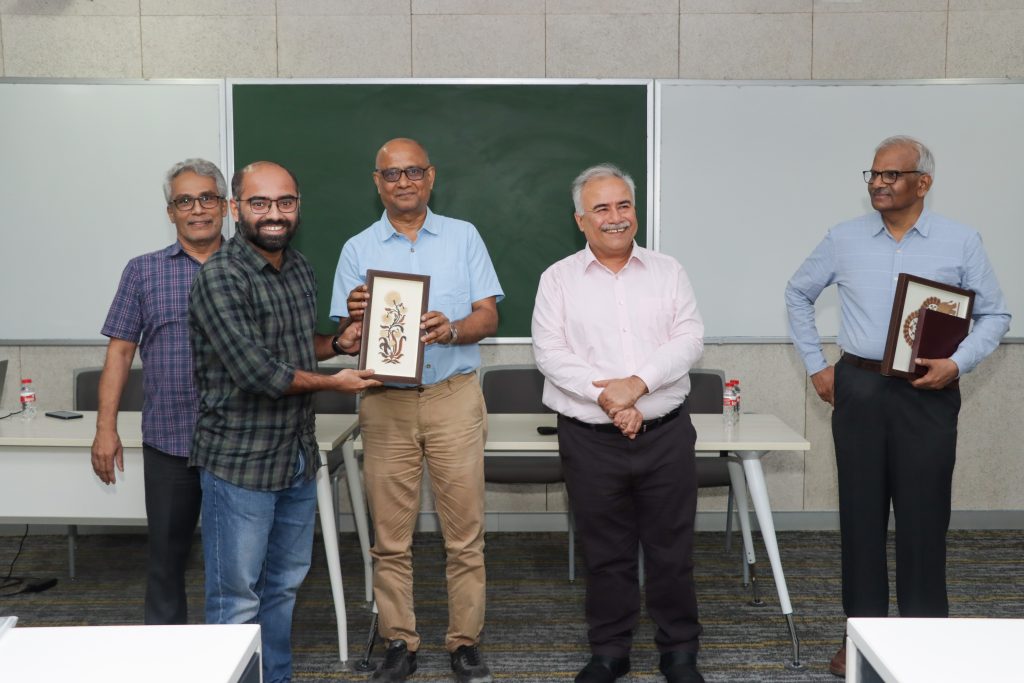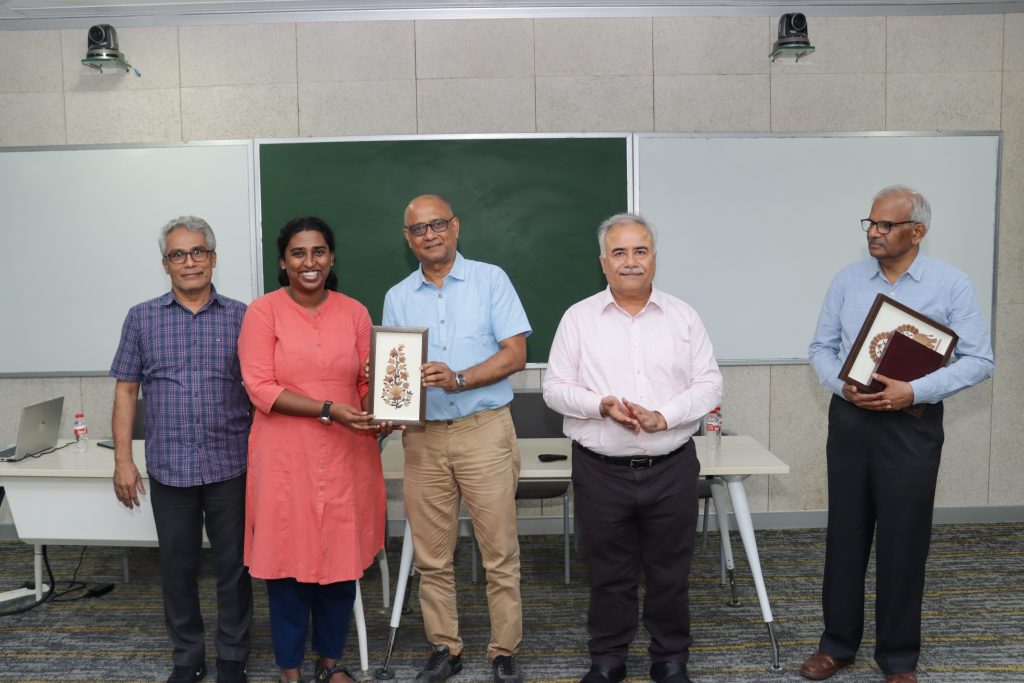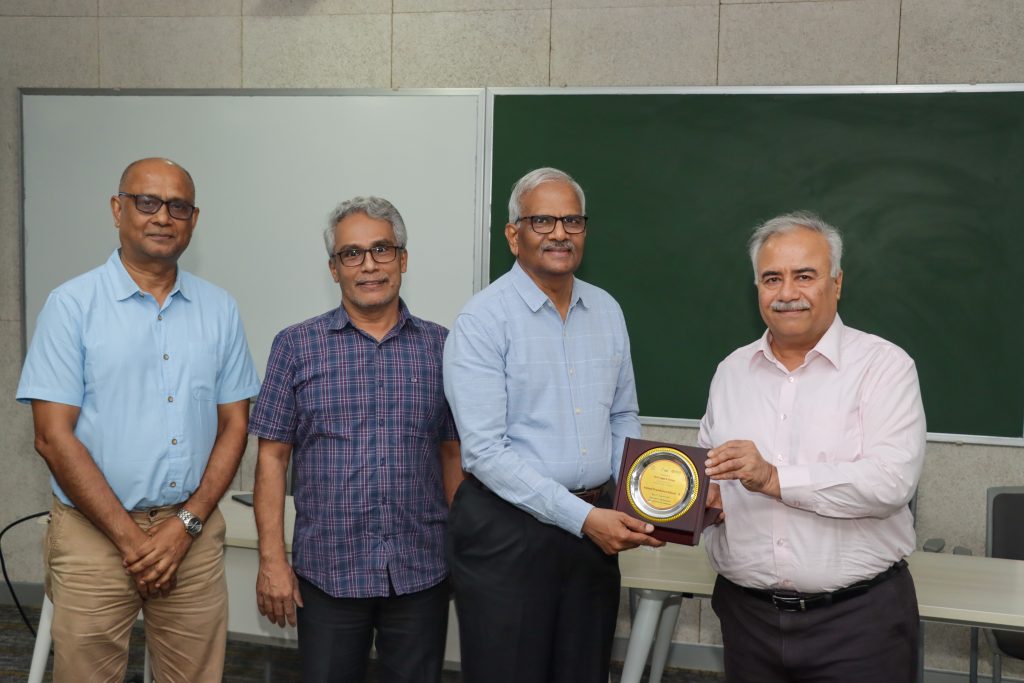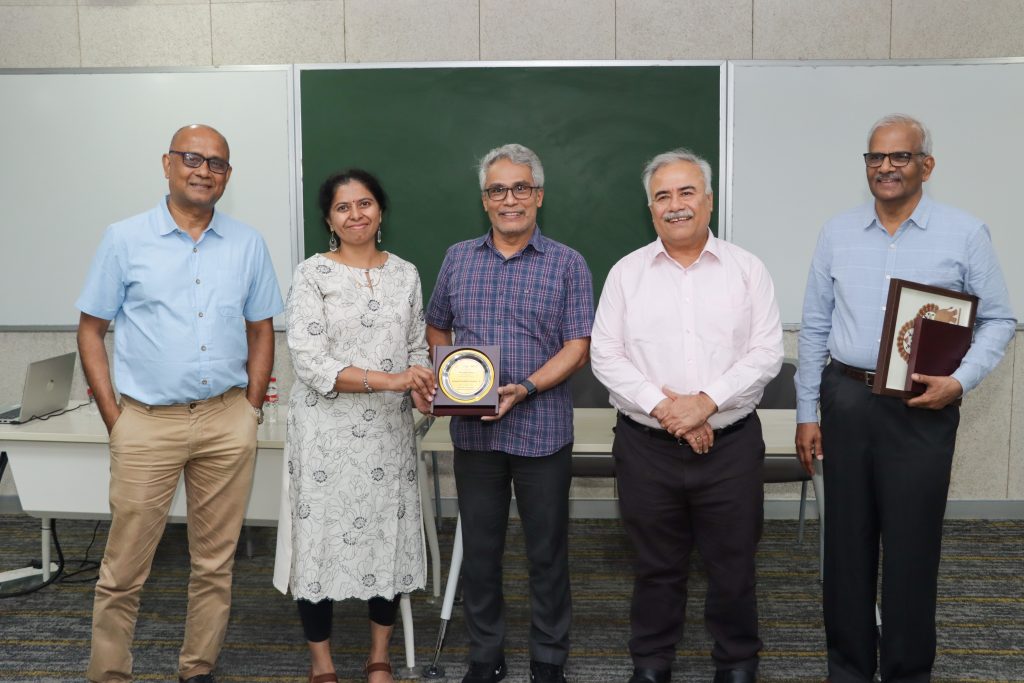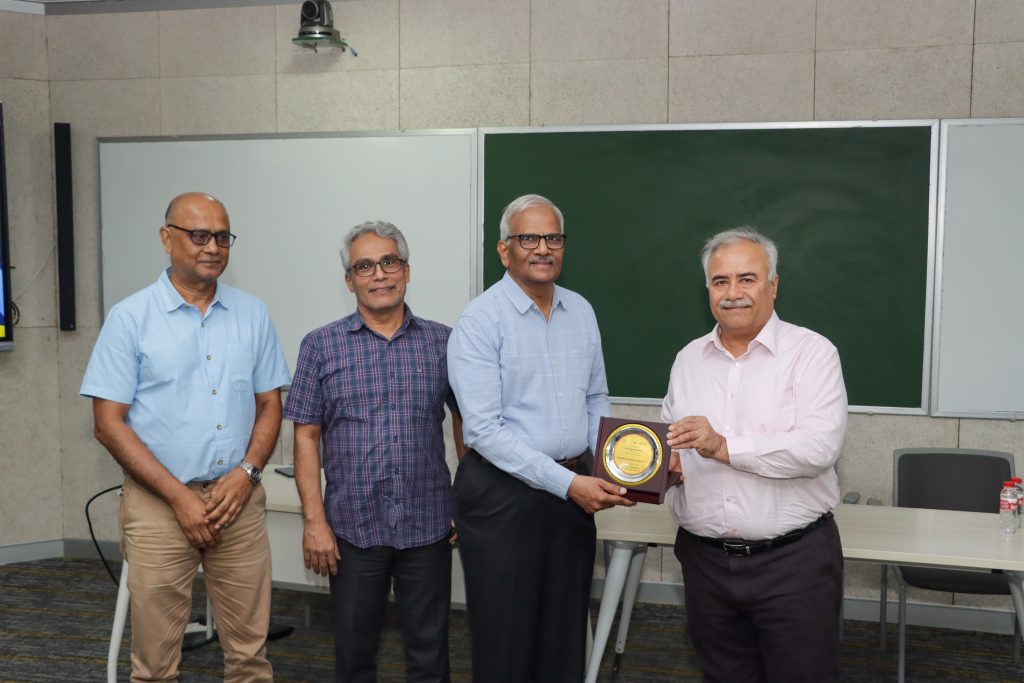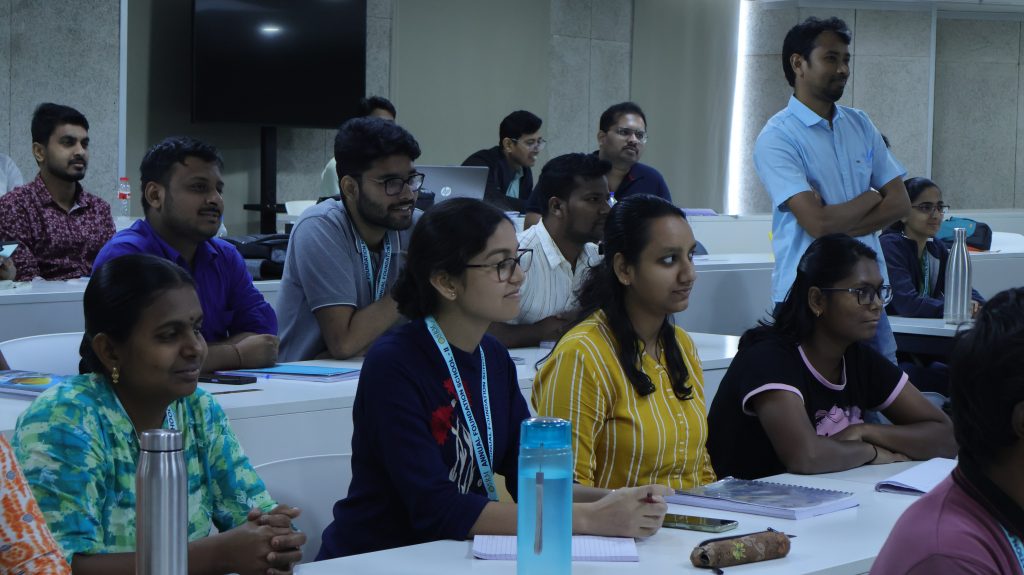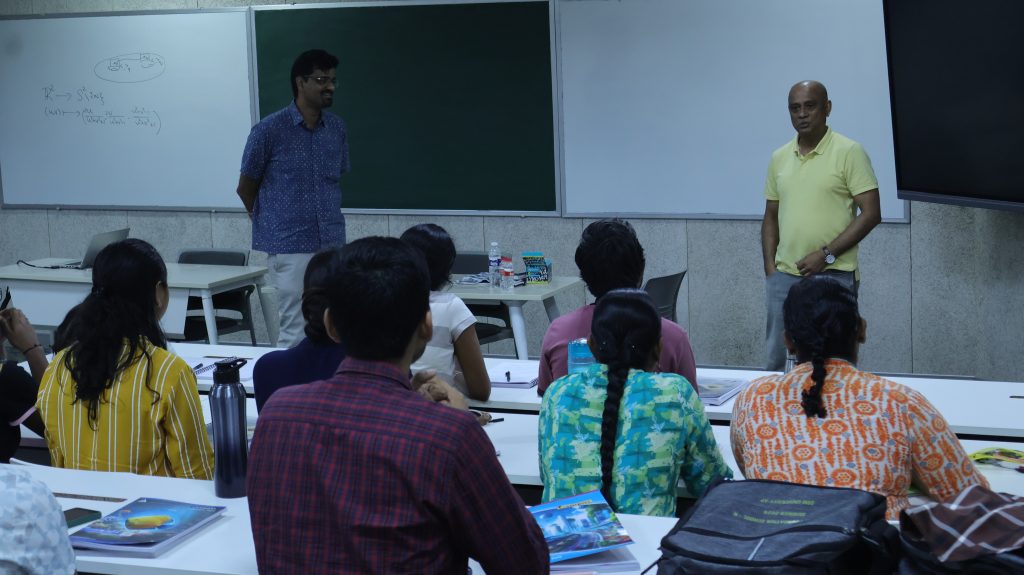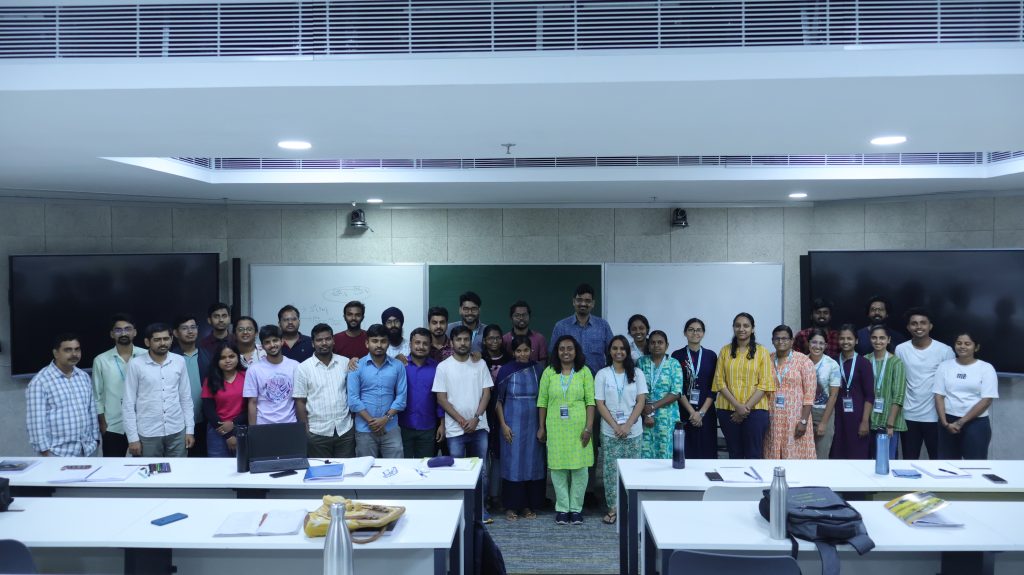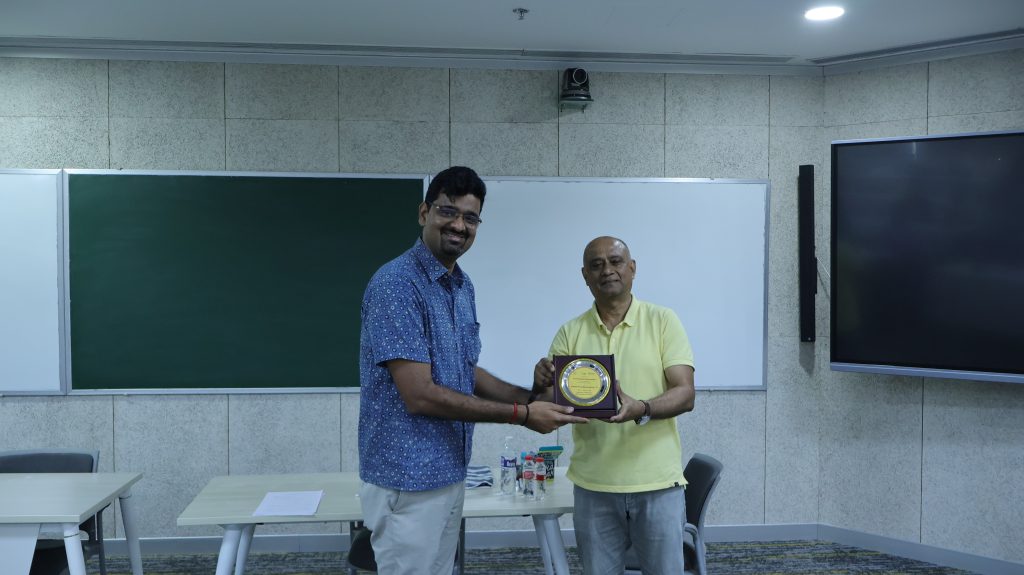Star Champion Rushendra Thirupathi Secures Silver at the Yonex-Sunrise Badminton Championship
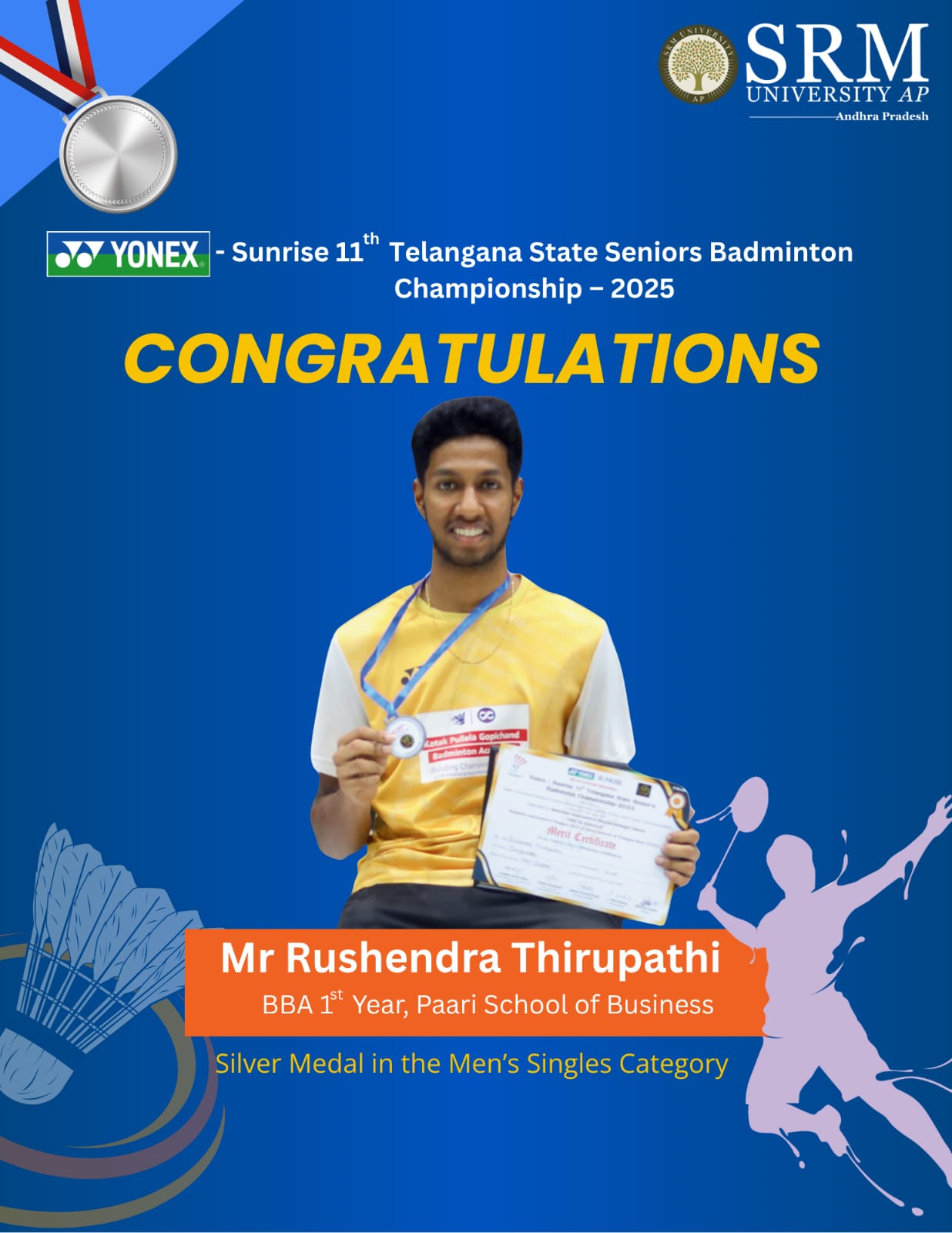
Badminton star, Rushendra Thirupathi, a first-year BBA student, clinched the silver medal in the Men’s Singles category at the Yonex-Sunrise 11th Telangana State Senior Badminton Championship 2025. Hailing from the state of Telangana, Rushendra’s dedication, discipline and relentless efforts have forged his name in the charts of successful champions in the field of Badminton.
Previously, Rushendra secured gold at the Yonex-Sunrise 46th Junior National Badminton Championships 2023 at Bengaluru and a bronze medal in the NMDC Telangana International Challenge in 2024. After a six-month break, Rushendra returned to the courts with zeal and passion and triumphed through the championship, competing with 142 athletes, placing second after a fierce final match.
After a well-awaited victory, Rushendra expressed his gratitude to his coaches, trainers, and team, who supported him during his time off. He said, “I am sincerely thankful to my coach, mentors, and team from the Gopichand Academy and SRM University-AP, who believed in me and my skills. Their guidance and support empowered me to overcome all difficulties and excel in the championship finals.”
Director of Sports, Mr Anup Singh Suryavanshi, applauded his remarkable achievement and congratulated the silver medallist. He commented, “This outstanding accolade is a testament to his fighting spirit and the well-rounded training system and facilities offered at SRM University-AP. We empower our athletes to rise, compete, and conquer national and international tournaments.”
Prof Ch. Satish Kumar, Pro-Vice Chancellor, appreciated the student. He quoted, “Achievements like this make the university proud and motivate the trainers and coaching team to put in their extra efforts to prepare students for such events.”
Prof. Manoj K Arora, Vice Chancellor, also expressed his appreciation for Rushendra, stating that the accomplishments of the rising sports star reflect the university’s spirit—ambitious and unstoppable. He commented, “We take immense pride in the ecosystem SRM AP has built to nurture excellence in sports and support our athletes to be champions of national pride.” The university continues to nurture athletes in various fields, offering divergent training and world-class facilities to generate sporting aces of the country.
- Published in Departmental News, News, Sports News, Students Achievements
Industrial Meet on Fracture Mechanics: Forging Industry-Academia Partnerships
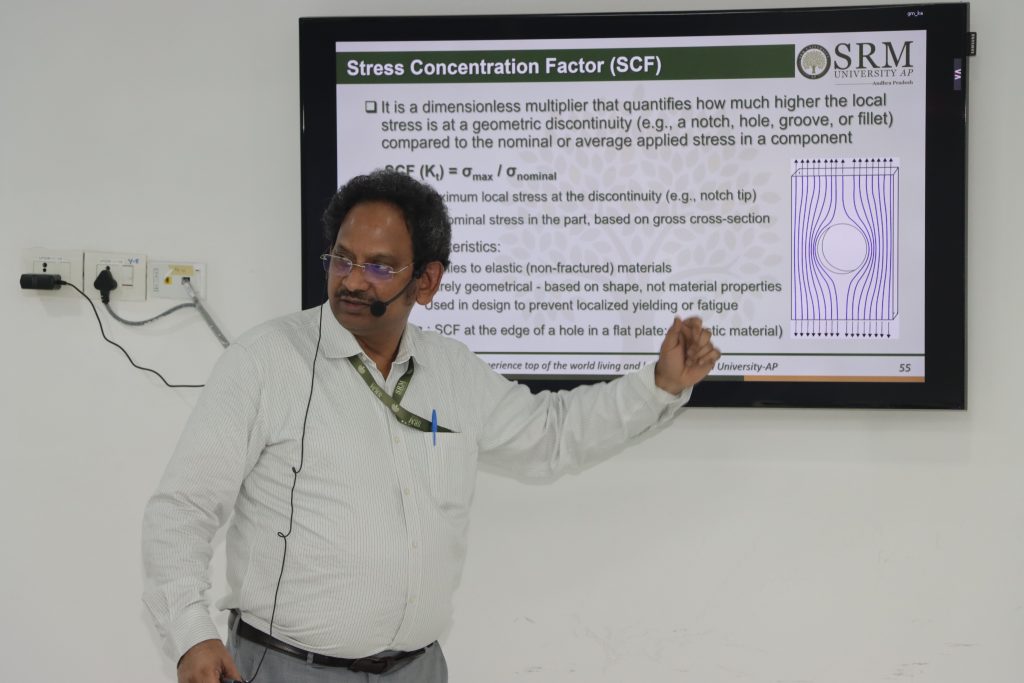
The Department of Mechanical Engineering organised a focused Industrial Meet on June 21, 2025, titled “Demystifying Fracture Mechanics for Industry: Safe Design, Analysis and Operation of Pressure Vessels, Piping & Pipelines & Green Hydrogen Storage and Transportation Equipment.” This specialised workshop was designed for professionals from well-established Refinery, Petrochemical and Oil & Gas, sectors and the emerging Green Hydrogen industry.
The industry meet commenced with a brief keynote address by Dr Dipak K Chandiramani, Independent Consultant (Mumbai) & Chair, ASME PVP Division, India, on the topic “Quality Assurance in Fabrication: Perspectives from Industry Standards.” His talk laid a strong foundational understanding, setting the stage for the central theme of the meet. visited the laboratories of the Department of Mechanical Engineering and discussed opportunities for commercialising the available facilities. He expressed interest in promoting our industrial training programs on ASME’s Master Class – Advanced Learning Programs webpage and invited faculty members to participate in the upcoming ASME code development committee meetings.
Dr Gurumurthy Kagita, Professor of Practice, Department of Mechanical Engineering, SRM AP, the main resource person for the event, shared his extensive industry experience relevant to the theme of the meet and explained the practical applications of fracture mechanics in the refinery, petrochemical, and oil & gas sectors, as well as in the emerging green hydrogen industry.
The meet began with an introduction to the key concepts of fracture mechanics, presented in a simple and accessible manner for industry professionals. Emphasis was placed on visual learning through graphics and animations rather than traditional classroom-style lectures. In the latter part of the session, the focus shifted to applying fracture mechanics in alignment with various international industry codes and standards. Several case studies were presented using in-house-developed software modules, including Brittle Fracture Screening, MPT envelopes for hydro-processing reactors, etc.
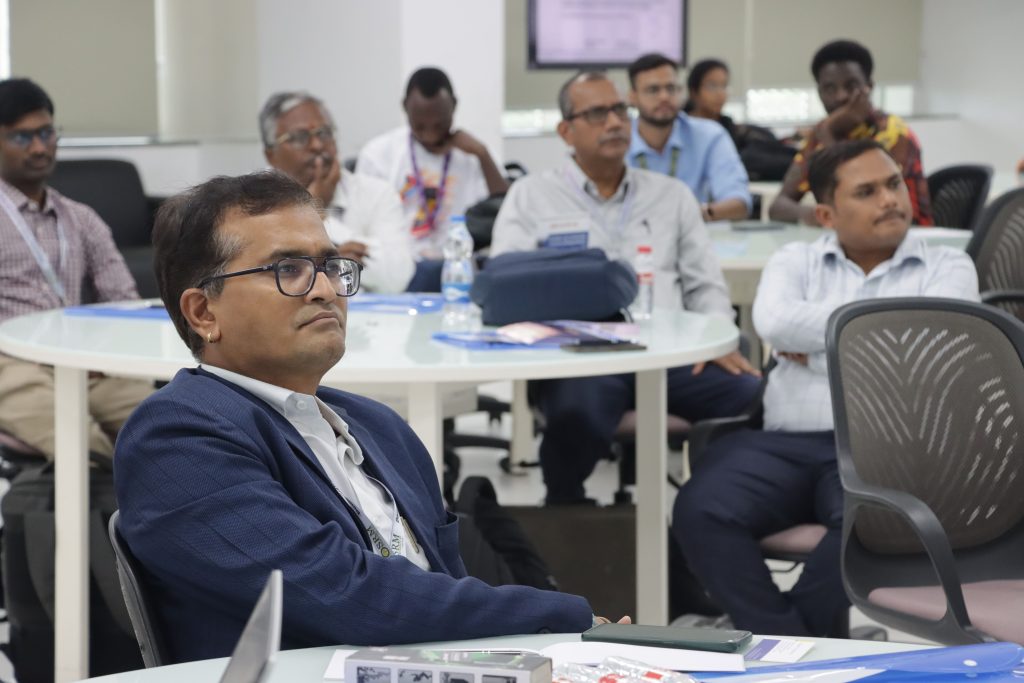
The meeting saw external participants from professionals across various industries, faculty members from the Department of Mechanical Engineering, and students, including both B.Tech. and Ph.D. scholars.
Several industry participants expressed strong interest in future collaboration with SRM University. Multiple organisations, including Anup Engineering, Jindal Renewable Pvt. Ltd., and Ratnamani Metals and Tubes Ltd., expressed interest in signing Memoranda of Understanding (MoUs) with SRM University for future collaboration in advanced engineering services. Several companies also expressed willingness to offer internships and placement opportunities to SRM AP students.
Industry representatives showed keen interest in collaborative research and consultancy projects, particularly in areas such as hydrogen pipeline design, digital twin tools, and numerical assessment of hydrogen-compatible materials.
These outcomes collectively highlight strong potential for long-term industry-academia partnerships and increased opportunities for students in training, research, and employment.
- Published in Departmental News, Mechanical Engineering NEWS, News, Workshop
A Sustainable Method for Recovery of Valuable Metals from LIBs
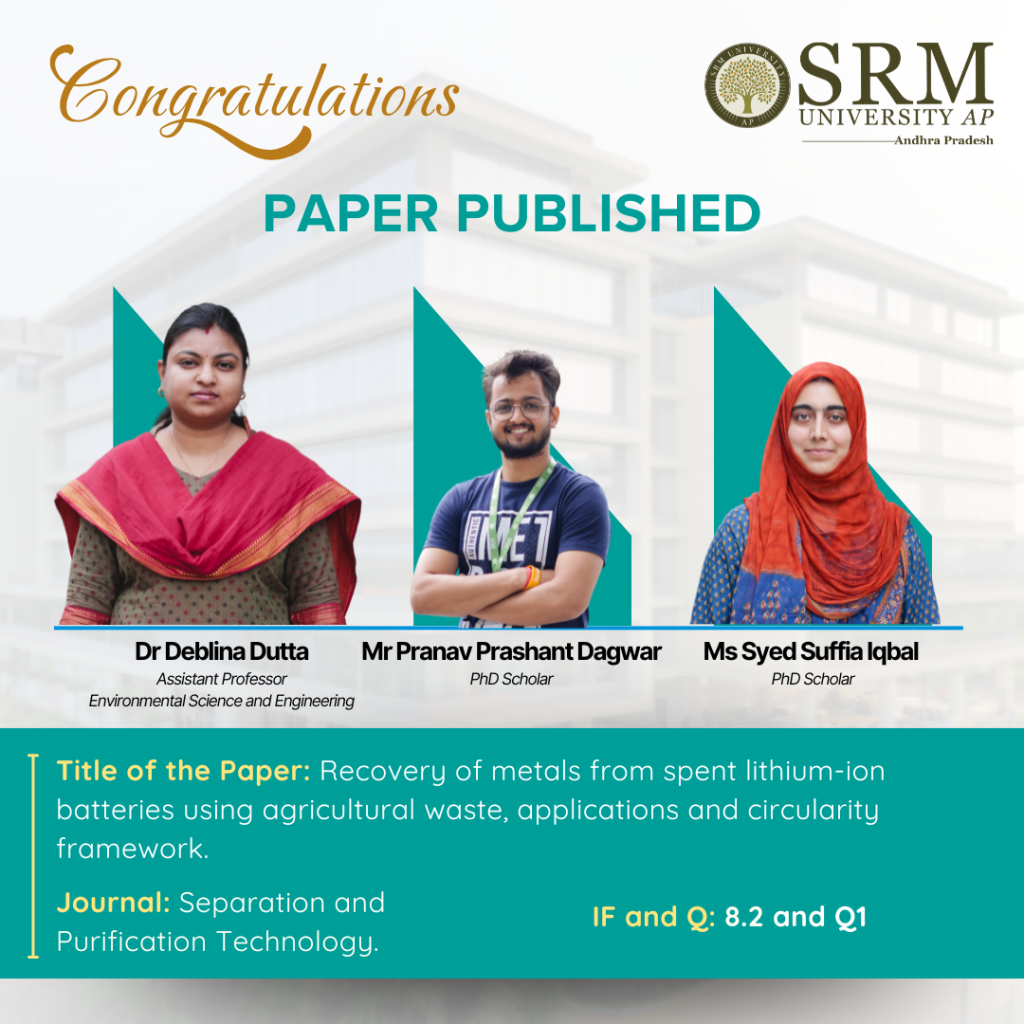
What happens when you can use natural waste like orange peels and rice husks to extract valuable metals from old batteries, electric vehicles, etc.? Exploring innovative and eco-friendly methods to recover useful metals, Dr Deblina Dutta, Assistant Professor, Department of Environmental Science and Engineering, and her research scholars, Ms Syed Suffia Iqbal and Mr Pranav Prashant Dagwar, have published a paper titled “Recovery of metals from spent lithium-ion batteries using agricultural waste, applications and circularity framework” in the prestigious Q1 journal Separation and Purification Technology having an impact factor of 8.2.
Abstract
This research explores an innovative, sustainable method to recover valuable metals (Li, Co, Ni, Mn) from spent lithium-ion batteries (LIBs) using agricultural waste such as rice husk, orange peels, tea waste, and sugarcane molasses. These organic wastes serve as eco-friendly, cost-effective leaching agents. The study compares conventional and biomass-based recovery methods, evaluates environmental impacts, and aligns the approach with circular economy principles to promote green technology and resource optimization.
Practical Implementation/ Social Implications of the Research
- Eco-friendly Recycling: Offers an alternative to hazardous chemical recycling by using biodegradable, non-toxic agricultural waste.
- Waste Valorisation: Transforms agricultural waste into a valuable resource, reducing landfill and open burning.
- Resource Recovery: Helps recover critical battery metals, reducing dependence on mining.
- Circular Economy: Supports sustainability goals by promoting a closed-loop recycling system.
- Policy Relevance: Aligns with SDGs such as clean energy (SDG 7), sustainable industries (SDG 9), and responsible consumption (SDG 12).
Collaborations
- Ain Shams University, Egypt
- Central Metallurgical R&D Institute (CMRDI), Egypt
Future Research Plans
- Scale up biomass-based metal recovery to pilot or industrial level.
- Develop hybrid leaching methods combining microbes and green solvents.
- Expand to rare earth element (REE) recovery from other waste streams.
Link to the article
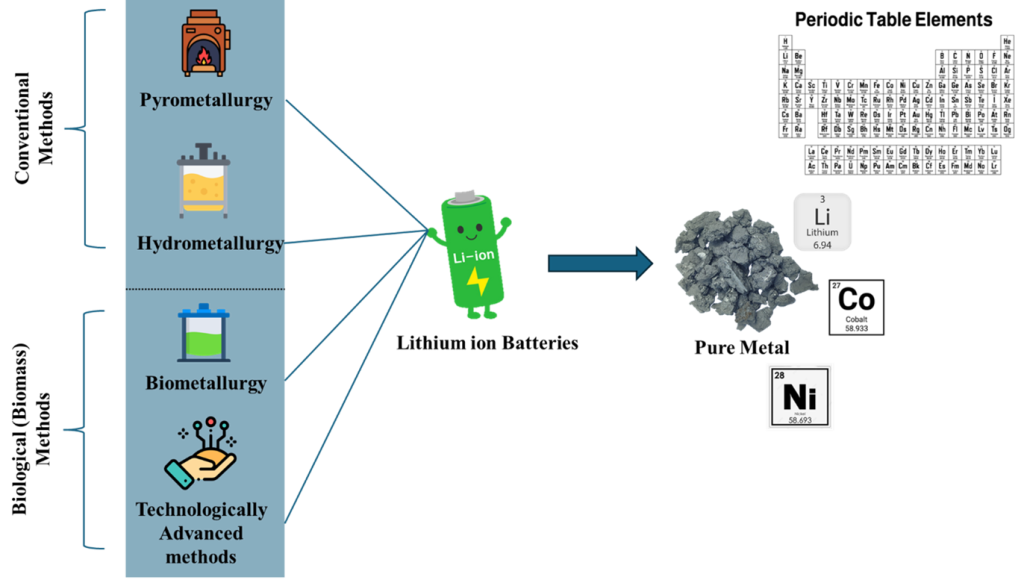
Fig. 2. Conventional and technologically advanced process for recycling LIBs.
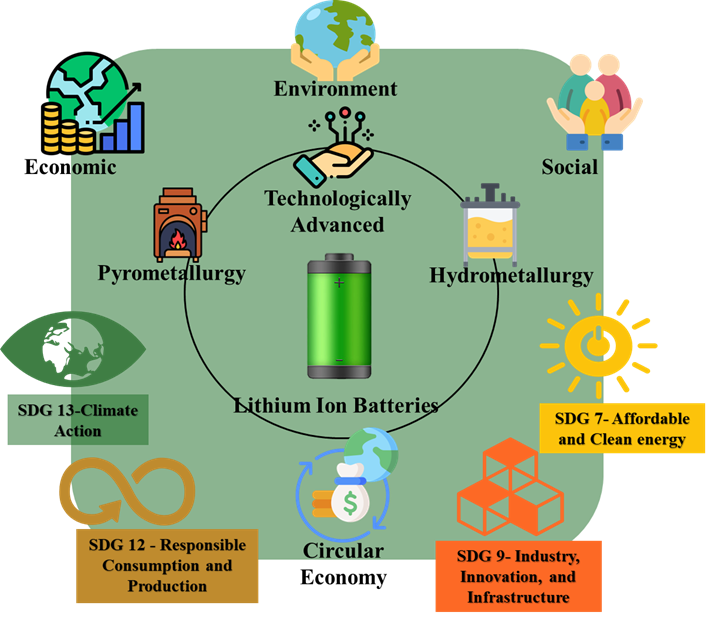
Fig. 9. Sustainability and circular economic applications in LIBs management.
- Published in Departmental News, ENVS News, News, Research News
A Novel Cooperative Spectrum Sensing Method Based on MASSFormer
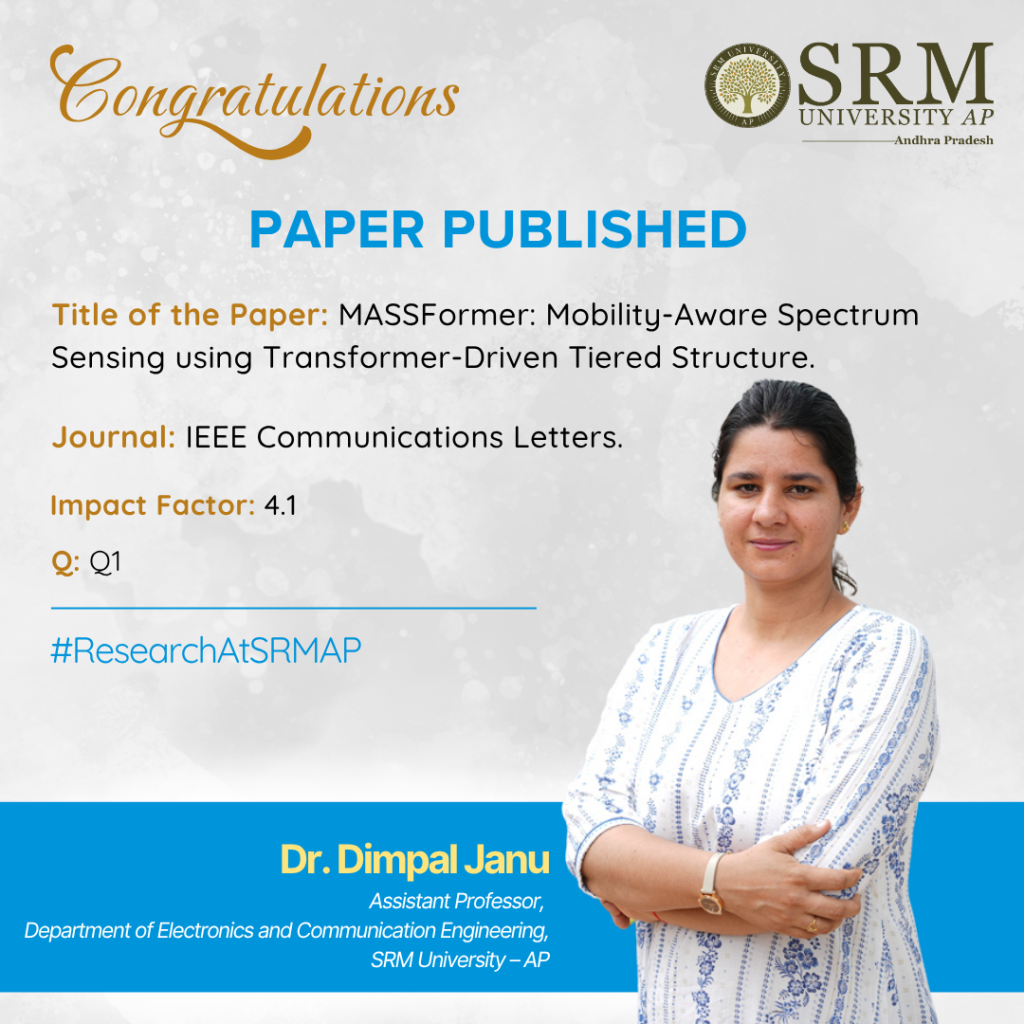
In the digital era, enhancing wireless connectivity is vital for systems’ accurate and efficient functioning. Working on a smart system to catalyse seamless wireless connectivity, Dr Dimpal Janu, Assistant Professor from the Department of Electronics and Communication Engineering, has published a paper “MASSFormer: Mobility-Aware Spectrum Sensing using Transformer-Driven Tiered Structure” in the Q1 journal IEEE Communications Letters. She has developed a novel cooperative spectrum sensing method based on MASSFormer that uses artificial intelligence, specifically a transformer model, to decide when to use a communication channel without causing interference.
Abstract
We develop a novel mobility-aware transformer-driven tiered structure (MASSFormer) based cooperative spectrum sensing method that effectively models the spatio-temporal dynamics of user movements. Unlike existing methods, our method considers a dynamic scenario involving mobile primary users (PUs) and secondary users (SUs) and addresses the complexities introduced by user mobility. The transformer architecture utilises an attention mechanism, allowing the proposed method to model the temporal dynamics of user mobility by effectively capturing long-range dependencies. The proposed method first computes tokens from the sequence of covariance matrices (CMs) for each SU. It processes them in parallel using the SU-transformer to learn the spatio-temporal features at the SU-level. Subsequently, the collaborative transformer learns the group-level PU state from all SU-level feature representations. The main goal of predicting the PU states at each SU-level and group-level is to improve detection performance even more. The proposed method is tested under imperfect reporting channel scenarios to show robustness. The efficacy of our method is validated with simulation results that demonstrate its higher performance compared to existing methods in terms of detection probability Pd, sensing error, and classification accuracy (CA).
Practical Implementation of Research
Smart cities & IoT Networks:
- MASSFormer enables intelligent spectrum sharing among a multitude of IoT devices in urban environments.
- It improves communication reliability in crowded and mobile settings, such as vehicular networks, smart traffic systems, or surveillance setups.
Social Implications of Research
MASSFormer is built to handle the mobility of users, which is essential in rural, remote, or developing areas where users often access the internet via mobile networks rather than fixed infrastructure. By enabling more efficient use of existing spectrum, the method helps extend internet access to remote and underserved regions, supporting education, healthcare, and economic development.
Future Research Plans
- Planning to develop hybrid models that blend classical detection with neural inference for improved interpretability and reliability.
- Use of federated learning so that SUs can collaboratively train models without sharing raw data.
Link to the article
- Published in Departmental News, ECE NEWS, News, Research News
Annual Foundation School (AFS)-II, 2025 Concludes
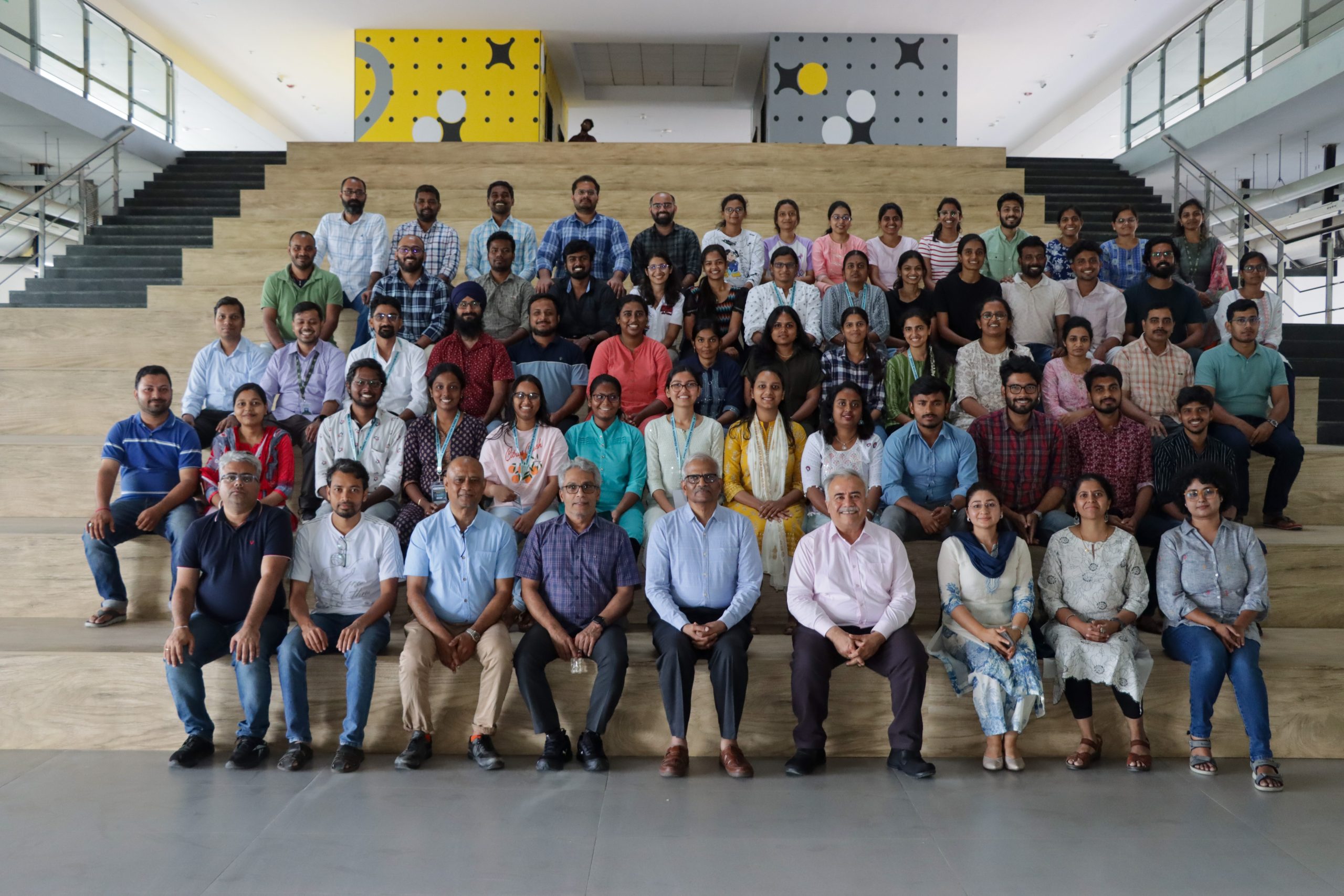 SRM University-AP concluded the second edition of the prestigious four-week intensive Annual Foundation School for Students of Mathematics. The programme, hosted in collaboration with the National Centre for Mathematics, a joint centre of TIRF and IIT, saw 31 students from various Indian universities participate.
SRM University-AP concluded the second edition of the prestigious four-week intensive Annual Foundation School for Students of Mathematics. The programme, hosted in collaboration with the National Centre for Mathematics, a joint centre of TIRF and IIT, saw 31 students from various Indian universities participate.
The participants were primarily PhD Scholars from universities like IIT Delhi, IISER Tirupathi, IIT Bombay, Jadavpur University, Ashoka University and Kannur University, to name a few. The main objective of the Foundational School was to offer training in fundamental mathematical concepts to Ph.D. scholars, emerging Researchers, and educators.
The four-week intensive training commenced on May 12, 2025, in the presence of Dean-SEAS, Prof. C V Tomy; Head of the Department, Prof. Kalyan Chakraborty; faculty members and students from the Department of Mathematics. The event was also graced by the presence of resource persons and course associates like Prof. Indranath Sengupta, Professor-IIT Gandhinagar; Prof. J. K. Verma, Professor-IIT Gandhinagar; Prof. Nikita Agarwal, Professor-IISER Bhopal; Dr Senthil Rani K S, Assistant Professor-IISER Berhampur; Dr Chaitanya J Kulkarni, Postdoctoral Fellow-IISER Mohali; Prof. Kashyap Rajeevsarathy, Professor-IISER Bhopal; Dr Ramesh Kasilingam, Assistant Professor-IIT Madras; Dr Archana Morye, Assistant Professor, University of Hyderabad, among others. The Foundation School dealt with topics like Algebra II, Analysis II and Topology II.
The Annual Foundation School (AFS) II, offered a stellar opportunity for the participants to engage, learn, and understand mathematical concepts while interacting with students from diverse academic backgrounds. The event concluded on June 07, 2025, and as part of the closing of the four-week foundational school, the university leadership, departmental heads, and faculty felicitated the resource persons with mementos honouring them for their contributions during the foundation course.
- Published in Departmental News, Math News, News
SRMAP Student, Budde Shanumukhi Naga Sai Shines at Singapore Asia Cup 2025
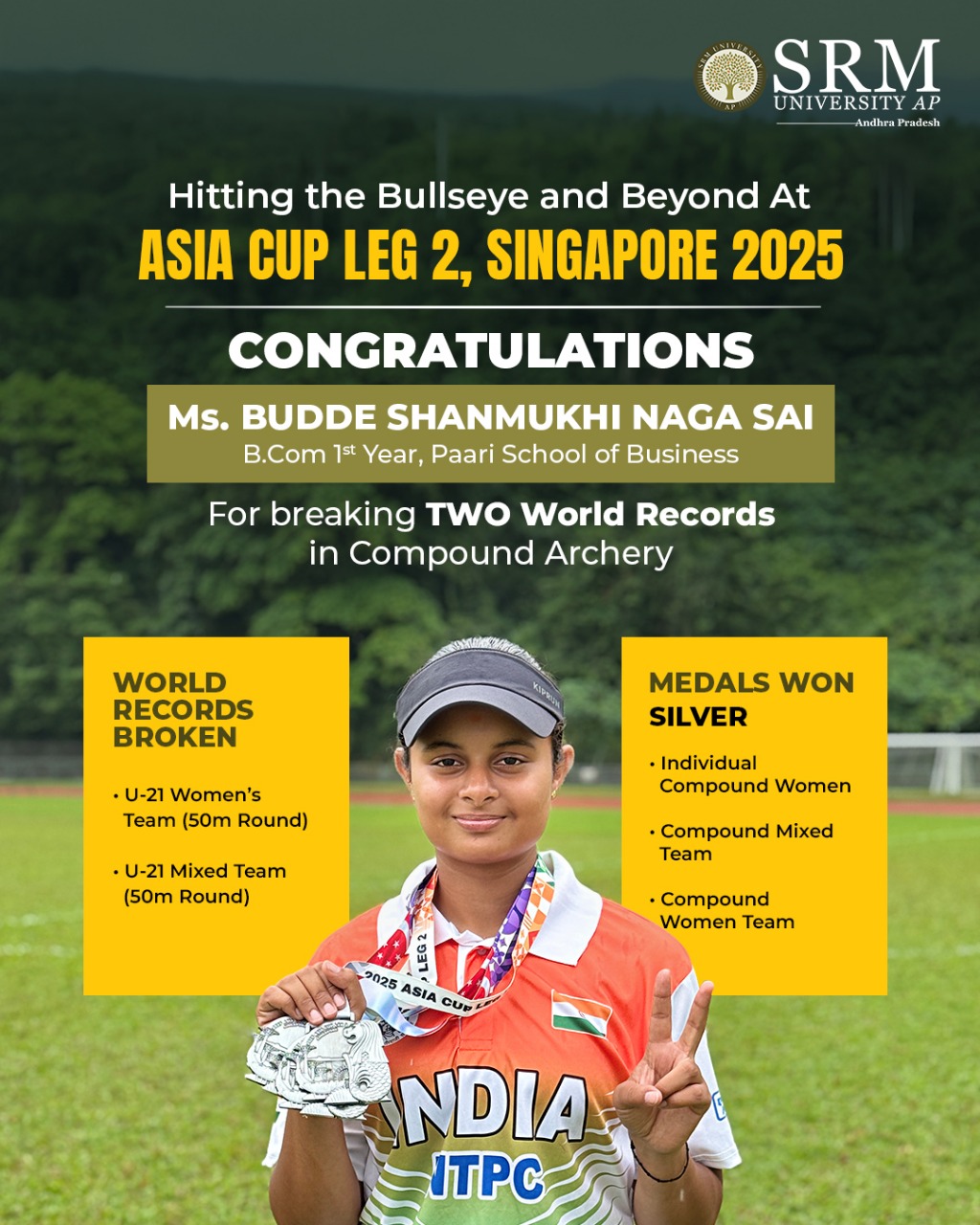 SRM University-AP, Amaravati, is proud to celebrate the outstanding achievement of Ms Budde Shanumukhi Naga Sai, a first-year B.Com student from the Paari School of Business, who has brought global recognition to the University by breaking two world records and winning three silver medals at the Singapore 2025 Asia Cup Leg 2.
SRM University-AP, Amaravati, is proud to celebrate the outstanding achievement of Ms Budde Shanumukhi Naga Sai, a first-year B.Com student from the Paari School of Business, who has brought global recognition to the University by breaking two world records and winning three silver medals at the Singapore 2025 Asia Cup Leg 2.
She set a new world record in the Under-21 Women Team (50m Compound) category with a score of 2101, surpassing the previous record of 2076, and also established a new world record in the Under-21 Mixed Team (50m Compound) category with a score of 1420, edging past the earlier record of 1419.
In addition to these record-breaking performances, Shanumukhi clinched three silver medals in the Individual Compound Women, Compound Mixed Team, and Compound Women Team events, solidifying her position as a rising star in international archery.
Reflecting on her success, Shanumukhi shared, “I am truly grateful and proud that my hard work has paid off. This achievement feels surreal, but it has come after navigating through intense pressure and challenging phases. Archery is not just a sport; it’s a game of the mind that demands immense mental strength and control.”
She added, “I believe that individuals with mental resilience and physical discipline can thrive in this game, as it presents limitless opportunities. Women, in particular, have immense potential to break boundaries and reach even greater heights in this field.”
Shanumukhi has been practicing archery for over seven years with a disciplined daily routine starting at 5:00 AM and continuing until 7:00 PM, encompassing both fitness training and skill practice.
Earlier this year, she secured third place in the 44th Junior National Tournament and 41st Sub Junior National Tournament in team, individual, and mixed categories, which were held in Bholpur, West Bengal, and Jaipur, Rajasthan, respectively.
Mr Anup Singh Suryavanshi, Director – Sports, added, “Shanumukhi’s achievement is truly inspirational. It reflects her dedication, resilience, and the sporting spirit we strive to foster at SRM-AP. We are committed to providing all the necessary support to help our athletes reach greater heights.”
Professor Manoj K Arora, Vice Chancellor of SRM University-AP, congratulated Shanumukhi on her remarkable feat, “Our students continue to make us proud by excelling on international platforms. Shanumukhi’s success is a testament to the University’s commitment to nurturing talent and supporting students’ holistic growth.”
Pro-Vice Chancellor, SRM University-AP, Dr Satish Kumar, said, “ Shanumukhi’s triumph shines brightly in the league of champions at SRM University-AP. Her outstanding performance on an international stage is a remarkable example of what our students can achieve with perseverance, focus, and the right support.”
SRM University-AP extends its heartiest congratulations to Budde Shanumukhi Naga Sai and wishes her continued success in her future endeavours.
- Published in Departmental News, News, Sports News, Students Achievements
Digestate Valorisation through Green Chemistry Technology
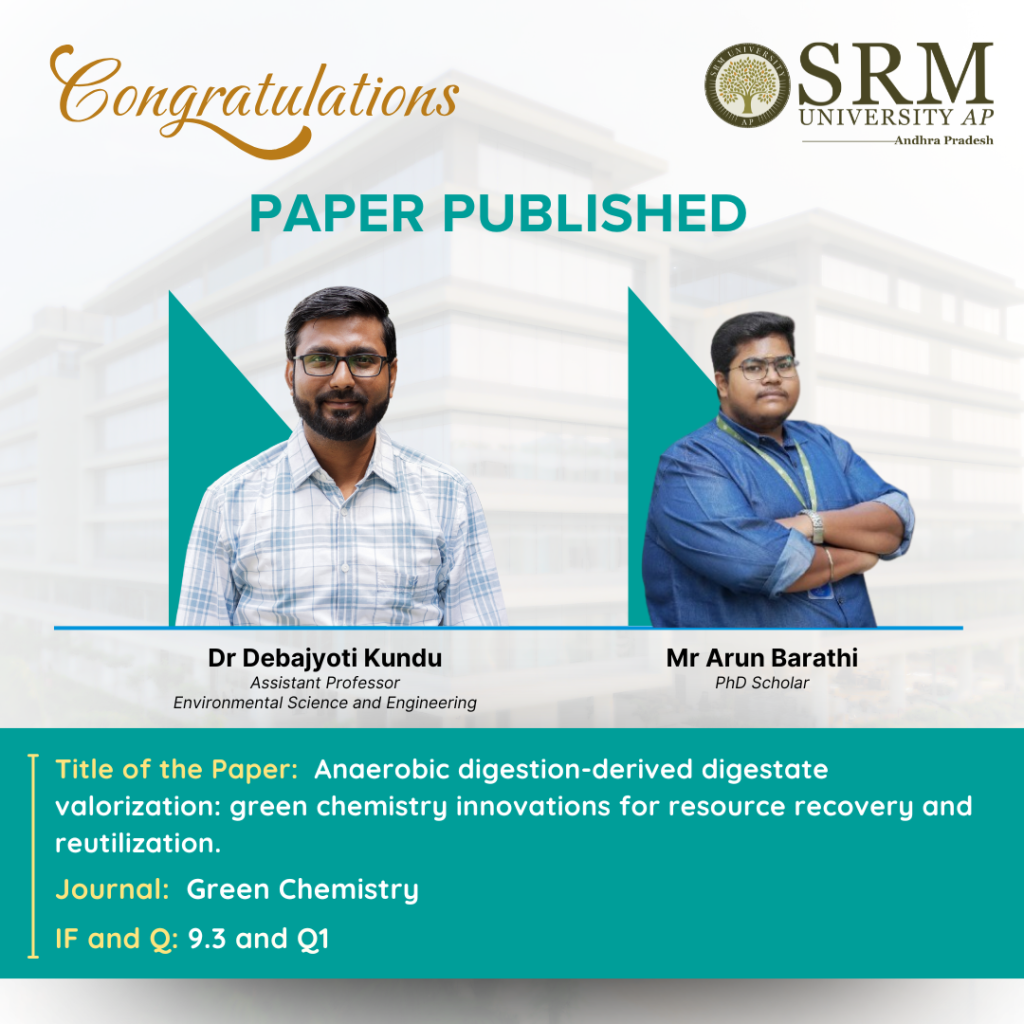
The proactive approach of Green Chemistry is driven by the cardinal rule of prevention rather than remediation of pollution. Analysing various eco-friendly ways to reduce waste, improve recycling, and help industries and farmers benefit from organic waste, Dr Debajyoti Kundu, Assistant Professor from the Department of Environmental Science and Engineering and his scholar Mr Arun Bharati, has published a paper titled “Anaerobic digestion-derived digestate valorization: Green chemistry innovations for resource recovery and reutilization”, in the Q1 journal Green Chemistry having an impact factor of 9.3.
Their research looked into eco-friendly ways to turn the bi-product of anaerobic digestion – digestate into valuable products like organic fertilisers, chemicals, and even ingredients for making plastics. The team also explores how to recover nutrients like nitrogen and phosphorus from it.
Abstract
Anaerobic digestion (AD) is a sustainable technology that converts organic waste into biogas, producing digestate as a by-product. This review investigates innovative strategies for digestate valorization through green chemistry approaches, emphasising its transformation into valuable resources such as biochar, bio-based polymers, and high-value chemicals like volatile fatty acids and humic substances. Additionally, the study explores nutrient recovery techniques like ammonia stripping and struvite precipitation. Through techno-economic and life cycle assessment perspectives, the work promotes digestate reutilization within a circular bioeconomy to enhance environmental sustainability and support net-zero goals.
Practical Implementation/ Social Implications of the Research
The research offers practical solutions for managing the large volumes of digestate generated in biogas plants. By converting digestate into biofertilisers, biochar, and industrial chemicals, we reduce the environmental burden of waste disposal and create economic opportunities for rural and urban stakeholders. These innovations support sustainable agriculture, reduce reliance on synthetic fertilisers, and promote clean technology, aligning with national and global sustainability goals, including SDGs and the circular economy.
Collaborations
The study was collaborative between SRM University–AP, SRMIST, Vignan’s Foundation, University of North Bengal, University of Burdwan, CSIR–NEERI, Thapar Institute, and Virginia Tech (USA).
Future Research Plans
The research lab focuses on the eco-friendly valorization of diverse organic wastes using green chemistry and sustainable bioprocessing approaches. We aim to develop scalable technologies for producing high-value biochemicals, enzymes, and biomaterials. These efforts are aligned with key UN SDGs.
Link to the article
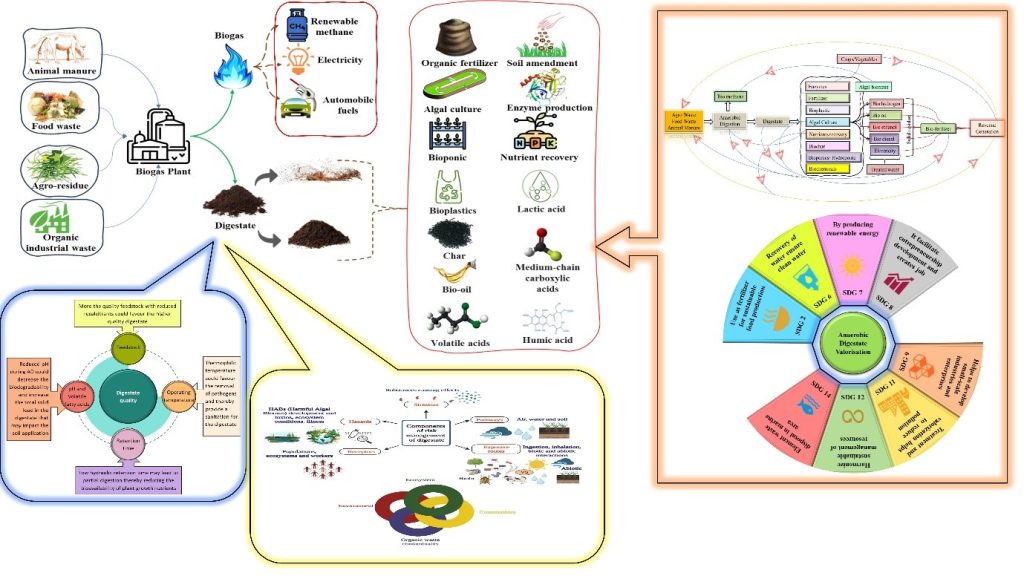
- Published in Departmental News, ENVS News, News, Research News
Microplastics: Hidden Drivers of Antimicrobial Resistance in Aquatic Systems
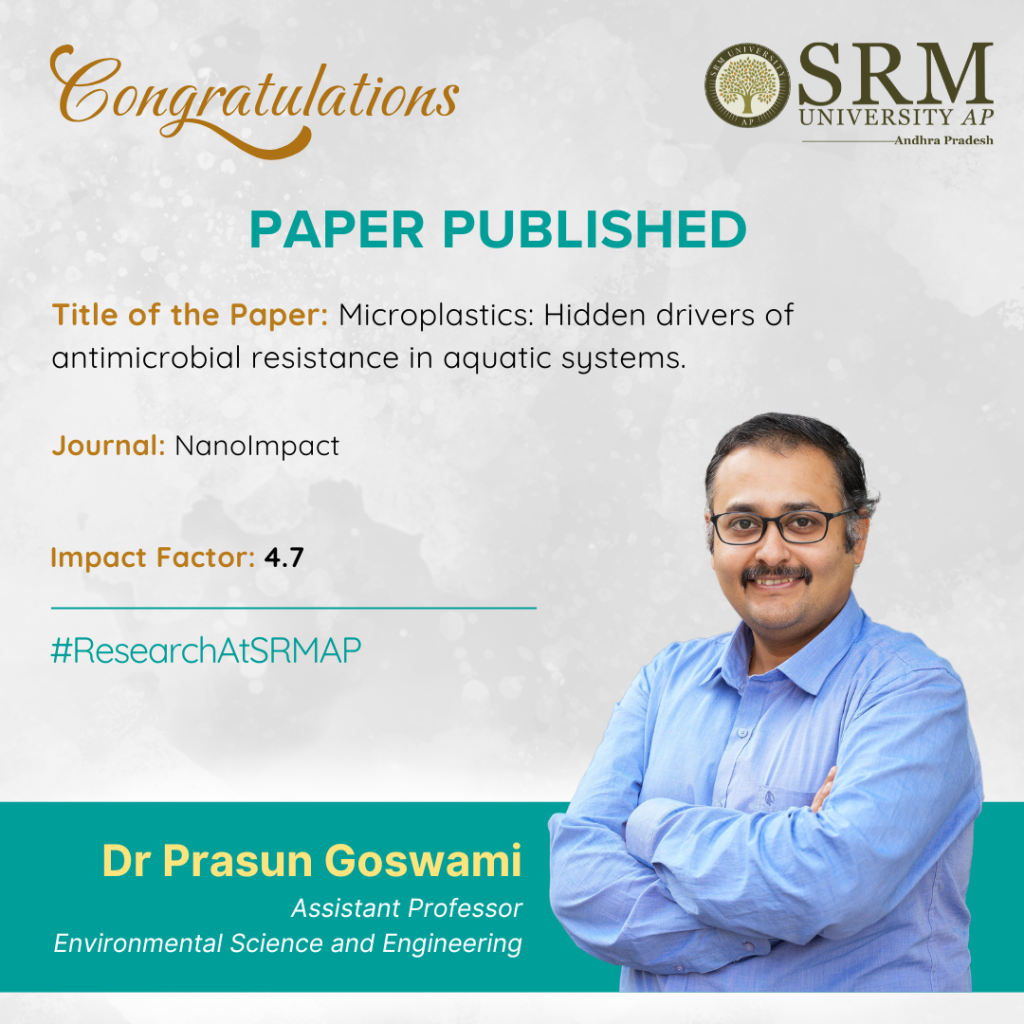
Dr Prasun Goswami, Assistant Professor from the Department of Environmental Science and Engineering, published a paper titled “Microplastics: Hidden drivers of antimicrobial resistance in aquatic systems”, in the Q1 journal, NanoImpact. His research reveals a concerning connection between microplastics and antimicrobial resistance in oceans. The study uncovers how microplastics in our oceans can harbour antibiotic-resistant pathogens, posing significant threats to marine ecosystems and human health. The paper not only sheds light on the topic but also proposes essential steps to better understand and manage the emerging threat.
Abstract
Tiny plastic particles, called microplastics, are commonly found in oceans, rivers, and lakes. These particles quickly gather layers of bacteria and other microbes, forming what scientists call the “plastisphere.” This plastisphere can carry harmful bacteria, including those that are resistant to antibiotics. Together, these plastic-based communities and the genes they carry make up what’s now being called the “Plastiome.” This review looks at how microplastics interact with bacteria and antibiotic resistance in water environments. It highlights how these plastics can collect and spread dangerous germs and genes that make infections harder to treat. The result is a growing health risk not just for marine life, but also for people. The review also points out areas where more research is needed and suggests ways to better understand and manage the spread of antibiotic resistance through plastic pollution in water.
Practical Implementation/ Social Implications of the Research
Understanding the Plastiome—the microbial life thriving on microplastics—is not just a scientific curiosity; it has real-world consequences. As these plastic particles travel through our oceans, they act as floating hubs for antibiotic-resistant bacteria, which can potentially enter the food chain via seafood or contaminate drinking water sources. The research highlights the urgent need for improved waste management, plastic use reduction, and policy frameworks to monitor microplastic pollution and its microbial cargo. By identifying how microplastics help spread antimicrobial resistance (AMR), the study can help inform public health strategies, guide marine conservation policies, and support international efforts to tackle both plastic pollution and the growing AMR crisis. In essence, tackling the Plastiome is not just about saving the oceans; it’s about protecting ecosystems, public health, and the future.
Collaborations
This work was conducted in collaboration with the National Institute of Animal Health, National Agriculture and Food Research Organization (NIAH-NARO), Tsukuba, Japan.
Future Research Plans
As part of the ongoing research, Dr Prasun explores how different plastic polymers interact with microbial communities and antibiotic resistance (AMR) genes in aquatic environments. Not all plastics behave the same—some may provide a more favourable surface for harmful microbes or facilitate the spread of resistance genes more efficiently. By understanding these polymer-specific interactions, he aims to identify which types of plastics pose the greatest environmental and public health risks. This research has important implications for designing safer materials, guiding environmental regulations, and developing strategies to curb the spread of AMR through plastic pollution in marine and freshwater ecosystems.</p
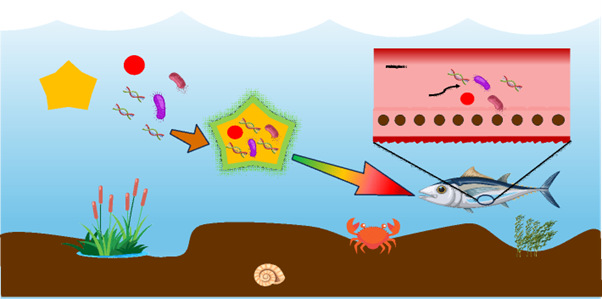
- Published in Departmental News, ENVS News, News, Research News
GAA-NSFET Biosensor for High-Sensitivity Label-Free Detection
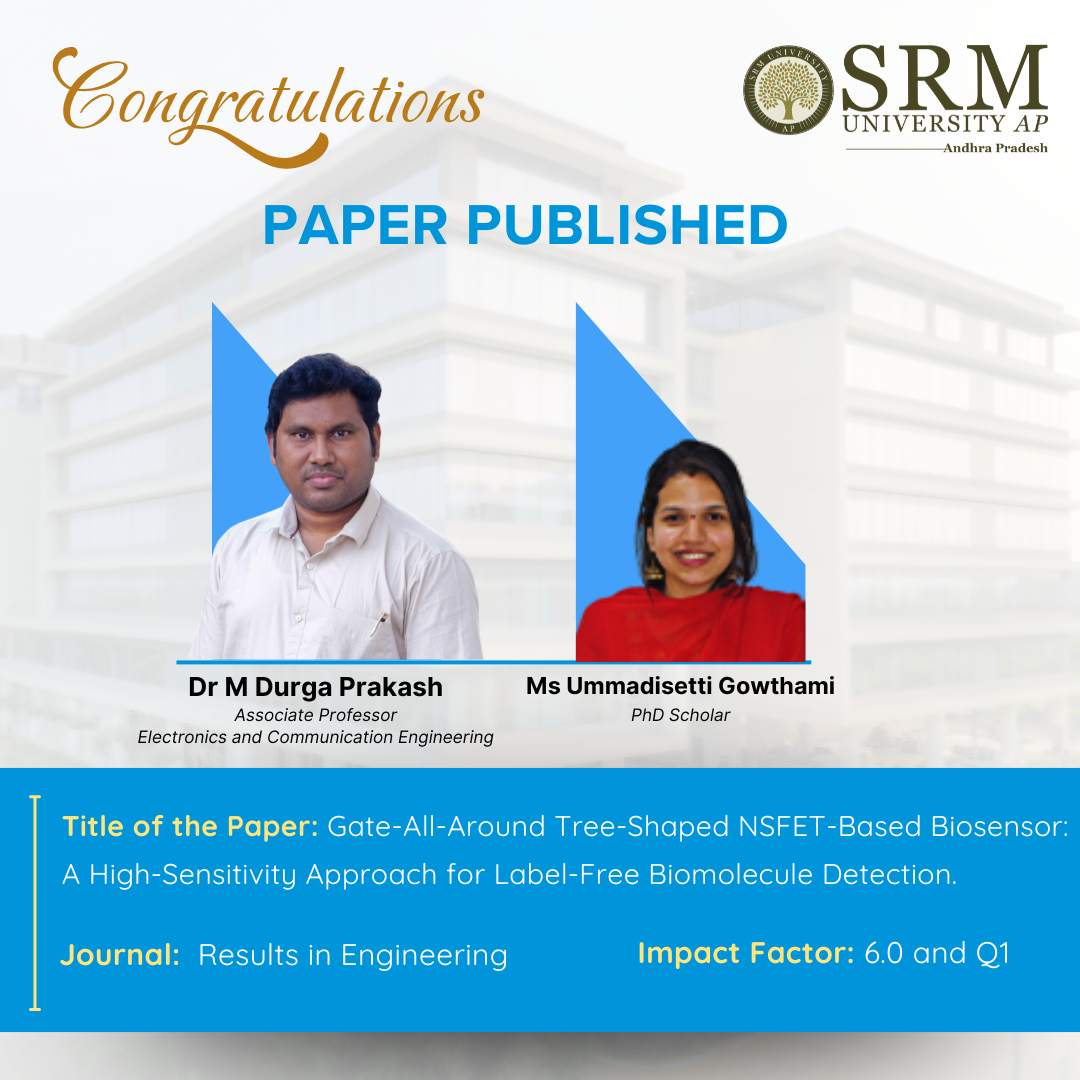 A cutting-edge research paper titled “Gate-All-Around Tree-Shaped NSFET-Based Biosensor: A High-Sensitivity Approach for Label-Free Biomolecule Detection” led by Dr M Durga Prakash, Associate Professor in the Department of Electronics and Communication Engineering, and Ms U Gowthami, PhD Scholar, has been published in the prestigious Q1 journal “Results in Engineering” with an Impact Factor of 6.0.
A cutting-edge research paper titled “Gate-All-Around Tree-Shaped NSFET-Based Biosensor: A High-Sensitivity Approach for Label-Free Biomolecule Detection” led by Dr M Durga Prakash, Associate Professor in the Department of Electronics and Communication Engineering, and Ms U Gowthami, PhD Scholar, has been published in the prestigious Q1 journal “Results in Engineering” with an Impact Factor of 6.0.
This study presents a groundbreaking advancement in label-free biosensing technology by developing a highly sensitive biosensor. The device can detect extremely small biological molecules—such as proteins and DNA—without the need for traditional labeling methods that rely on fluorescent or radioactive tags. At the core of this innovation is a uniquely engineered transistor known as the Gate-All-Around Tree-Shaped Nanosheet Field-Effect Transistor (GAA-TS-NSFET). With its distinctive tree-like structure featuring multiple nanosheet branches, this advanced transistor design enables the detection of both charged and neutral biomolecules with exceptional sensitivity.
Abstract :
This paper proposes and investigates a label-free dielectrically modulated biosensor employing a Gate All Around Tree-Shaped Nanosheet Field Effect Transistor (GAA-TS-NSFET). The suggested biosensor’s excellent sensitivity to charged and neutral biomolecules is demonstrated by its electrical properties when evaluated under various biomolecule influences.
A thorough sensitivity assessment is used to assess the sensing capabilities of the biosensors with various channel configurations. As indicators of biosensor sensitivity variation, we examine the subthreshold swing (SS), threshold voltage (Vth), and current switching ratio (Ion/Ioff). According to the findings, an additional channel acts as an interbridge, allowing the tree-shaped biosensor to attain the best sensitivity compared to biosensors based on NSFETs. Additionally, the article investigates how various spacer materials impact sensitivity. We also run several scenarios to see how different fill percentages affect the proposed biosensor’s sensitivity. The amount of biomolecules present determines its sensitivity. Finally, the suggested biosensor’s sensitivity is compared to other notable biosensing application efforts in a status map. The proposed GAA-TS-NSFET-based biosensor outperforms the previous works concerning Ion/Ioff sensitivity.
Practical Implementation of the Research
- Faster & Cheaper Diagnostics – Reduces reliance on expensive lab tests, making healthcare more accessible.
- Early Disease Detection – Could save lives by catching illnesses (like cancer or infections) at earlier stages.
- Less Invasive Testing – Since it doesn’t require labeling (no dyes or radioactive tags), it’s safer and simpler.
- Environmental Benefits – Could replace some chemical-based detection methods with electronic sensing, reducing waste.
Collaborations: School of Engineering, University of Warwick, Coventry CV4 7AL United Kingdom
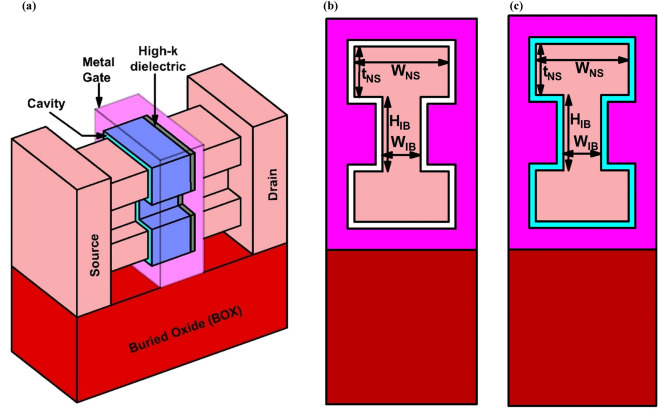
Fig. (a) 3-D view of GAATree-shaped NSFET-based biosensor; Transverse cross-sectional view of GAA Tree-shaped NSFET-based biosensor: (b) from source side and (c) from drain side.
- Published in Departmental News, ECE NEWS, News, Research News
Patent Published for Revolutionary Electrode Material in Clean Hydrogen Production
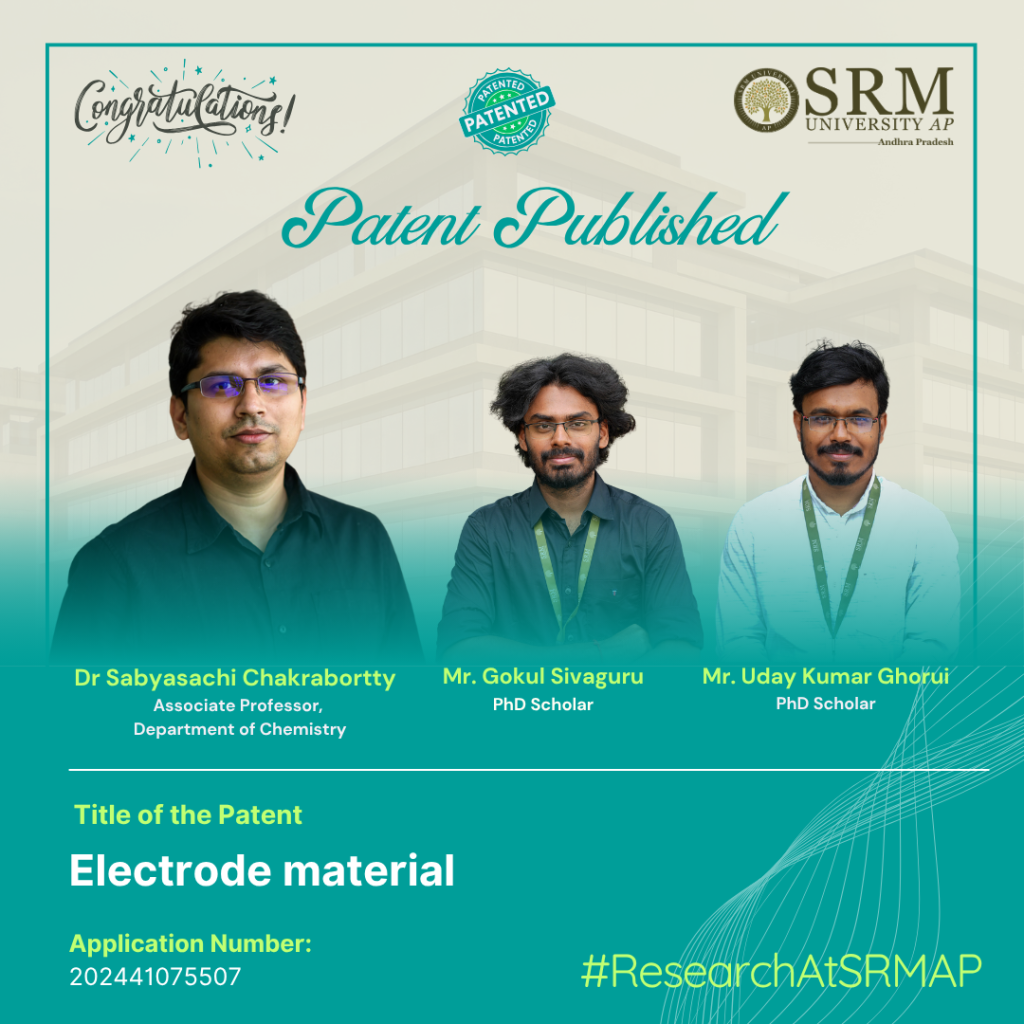
In the growing need for clean energy solutions, Dr Sabyasachi Chakrabortty, Associate Professor, Department of Chemistry, Dr Uday Kumar Ghorui (Post Doctoral Scholar) and Mr Gokul Sivaguru (PhD scholar) have filed and published the invention of “Electrode material” with Application Number: “202441075507” in the Patent Office Journal, on developing a low-cost, eco-friendly electrode material using a simple hydrothermal process. The research team has developed a pioneering Ternary Transition Metal Oxide (TTMO) nanocomposite electrode for the hydrogen evolution reaction (HER). Their work focuses on creating a sustainable alternative to fossil fuel-based hydrogen production methods, which currently generate significant CO₂ emissions.
Abstract
This disclosure focuses on developing a low-cost, earth-abundant Ternary Transition Metal Oxide (TTMO) nanocomposite electrode for efficient, clean hydrogen production, addressing the depletion of fossil fuels and the CO₂ emissions from current methods like methane reforming and coal gasification. Using a simple hydrothermal process, the TTMO electrode demonstrates excellent electrochemical HER performance, with low overpotential and 100-hour stability, despite challenges in cost, infrastructure, and safety for hydrogen energy generation.
Practical Implementation/ Social Impact of the Research
Practical Implementation
- The research develops a cost-effective TTMO nanocomposite electrode using a scalable hydrothermal method
- Enables efficient hydrogen production with low overpotential
- Offers a practical, sustainable alternative to fossil-fuel-based methods
- Achieves 100 hours of stable hydrogen generation while minimizing CO₂ emissions
- Enables efficient hydrogen production with low overpotential
Social Implications
- Addresses the critical need for clean, renewable energy sources
- Provides a sustainable solution for hydrogen production without carbon emissions
- Makes green hydrogen technology more accessible through cost-effective materials
- Contributes to global efforts in reducing dependence on fossil fuels
Future Research Plans
- Optimising the TTMO nanocomposite’s composition and synthesis to boost HER efficiency
- Improving stability for industrial-scale hydrogen production
- Exploring integration into real-world energy systems
- Investigating other earth-abundant materials to advance affordable, green hydrogen technologies
- Published in Chemistry-news, Departmental News, News, Research News


